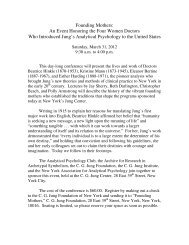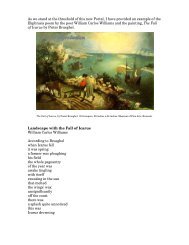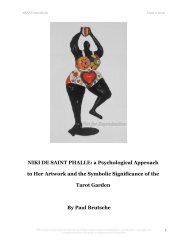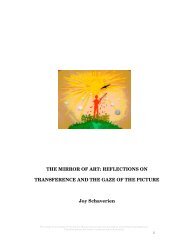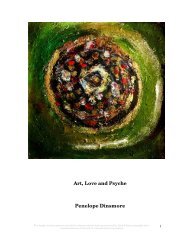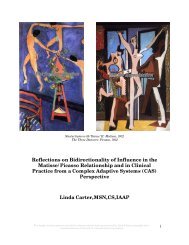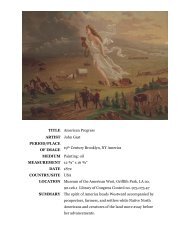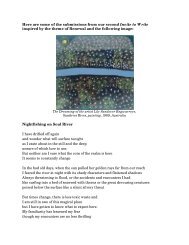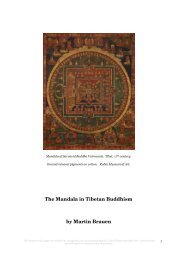Pictorial Space throughout Art History: Cézanne and ... - ARAS
Pictorial Space throughout Art History: Cézanne and ... - ARAS
Pictorial Space throughout Art History: Cézanne and ... - ARAS
Create successful ePaper yourself
Turn your PDF publications into a flip-book with our unique Google optimized e-Paper software.
<strong>ARAS</strong> Connections Issue 2, 2012<br />
relationships the painting does not vibrate. The beam above the woman's head<br />
makes no sense in the overall structure. The strong backward movement from<br />
table to figure is not balanced; the table pushes forward <strong>and</strong> the figure falls<br />
backwards to create a hole in the surface of the canvas. There is an illusion of real<br />
space as though the woman were seen through a window frame. The figure seems<br />
to shrink.<br />
In El Greco's painting, the diagonal back from the lower-left corner to the<br />
upper-right corner is contained by the diagonal forward across the sleeves. The<br />
table <strong>and</strong> book in the foreground are pushed down <strong>and</strong> flattened, while the<br />
Cardinal's upper body looms close to the picture plane. There is a major tension<br />
between the planes of the book <strong>and</strong> the red cloak. The painting is like a relief (see<br />
Michelangelo). The surface of the canvas is alive. All forms are related to it. The<br />
space, for example between h<strong>and</strong>s <strong>and</strong> face, is contained in relation to the<br />
surface. The figure exp<strong>and</strong>s massively.<br />
This comparison shows how pictorial space was weakened by the influence<br />
of the Renaissance. Caravaggio's concern for light <strong>and</strong> realism led painting in the<br />
direction of illustration. El Greco retained the formal order of Byzantine art.<br />
Plate 10: Indian, Vijayanagar period <strong>and</strong> Carpeaux<br />
In Yashoda <strong>and</strong> Krishna there is a strong sense of the cube from which the<br />
figures are sculpted. Relative to the dimensions of that cube, I see, between the<br />
masses, many proportionate distances <strong>and</strong> tensions. For example, I see tensions<br />
between the torsos of mother <strong>and</strong> child, between the two heads, between the<br />
mother's breasts, <strong>and</strong> between the mother's knees.<br />
The images in this paper are strictly for educational use <strong>and</strong> are protected by United States copyright laws. 50<br />
Unauthorized use will result in criminal <strong>and</strong> civil penalties.



